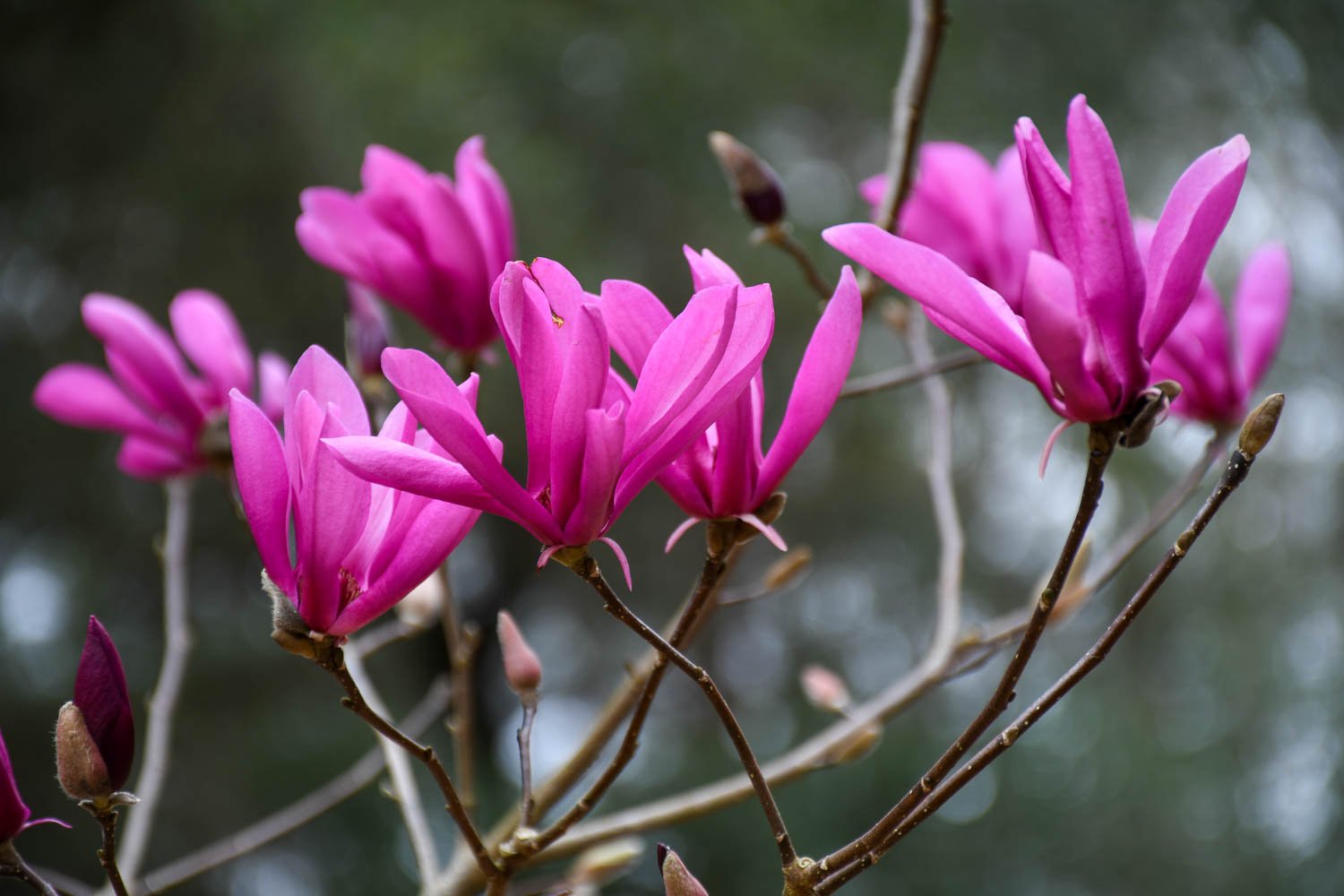Midwinter has arrived, and from the emerging Narcissus to the early slivers of buds swelling on trees, it is good to see more color manifesting in the landscape.
Over the past month I’ve also spied Magnolia popping out of buds around town, especially the starry blooms of Magnolia stellata. However, most show some burn as they’ve had a roller coaster ride through temperatures this winter. They’ve gotten mixed signals from an extremely warm fall followed by a sudden drop to 22°F on January 2. But, my ‘Susan’ has had a decent show of late. The warmth the past few days has coaxed the flowers further into bloom.
As the flowers of ‘Susan’ open, they have a bit of a twist to the petals.
When we bought our house, I counted myself fortunate to have three Magnolia on the property. There were two large 30-to-40 foot tall Magnolia grandiflora out front, and off in the side yard was a shrubby deciduous Magnolia I couldn’t immediately identify in mid-summer.
The following late winter when it bloomed, I was rewarded with rich deep pink flowers. I posted photos online, and Greg Paige and Barry Yinger helped me identify it as ‘Susan’, one of the Little Girl hybrids that came from breeding work at the US National Arboretum (USNA). Key features that helped them key out this cultivar were the presence of 6 (rarely 7) tepals per bloom, each having a slight twist.
The “girls” were bred to develop selections that would bloom a little later than Magnolia stellata and miss the early frosts that plague many of these early magnolias. According to Dorothy Callaway in The World of Magnolias, four of the Little Girl hybrids come from the breeding work of USNA horticulturist William Kosar. In 1956 he fertilized Magnolia lilliflora ‘Nigra’ with pollen from Magnolia stellata ‘Rosea’. This cross resulted in not only my ‘Susan’, which was named after the director of the arboretum’s daughter, but also ‘Betty’, ‘Jane’, and ‘Pinky’. The other four girls (‘Ann’, ‘Judy’, ‘Randy’, and ‘Ricki’) were from breeding work done earlier by Dr. Francis deVos.
‘Susan’ is an award-winning plant; Andrew Bunting wrote in The Plant Lover’s Guide to Magnolias that she won the RHS Award of Garden Merit in 1993. This cultivar has a shrubby habit similar to Magnolia stellata. Ours is not much over 10 feet tall and approximately as wide; however, one that I saw at the Scott Arboretum in 2014 was at least 15—20 feet tall and had a much wider spread. I see the benefit of using ‘Susan’ in smaller landscapes. The plant grows lush in the spring and is enjoyed by not only me, but the blasted white-tailed buck that decided to use a side stem as an antler rub. It is healing well from that injury. And, I never irrigate ‘Susan’, and yet she keeps blooming and thriving year after year.
A mature ‘Susan’ Magnolia at The Scott Arboretum in full bloom in mid-April.
Buds emerge fairly dark, almost a black-purple but lighten to a vivid pink when coming into bloom, and there is a gradient of lightening color as one follows a tepal toward the outside of the flower. Acclimated buds survived two nights of 19°F and 20°F last week and have begun to bloom in earnest the past few days celebrating the arrival of midwinter. Of course the running joke is that it coming into full bloom is a sign that another freeze is upon us. I’m sure it’s about as accurate as the groundhog seeing its shadow, but coincidentally, we will be in the low 20’s the next few nights with the cold front that moved through yesterday.
Nevertheless, I still love having magnolias like ‘Susan’ in the landscape for the good years when they liven the bleak midwinter with their brilliant color. For now, I have just one of the girls, but seeing how well ‘Susan’ has done, I can’t wait to add more of them to our garden.
Our ‘Susan’ has a ways to grow before it reaches the size of the one at The Scott Arboretum, but I enjoy its show each spring.



